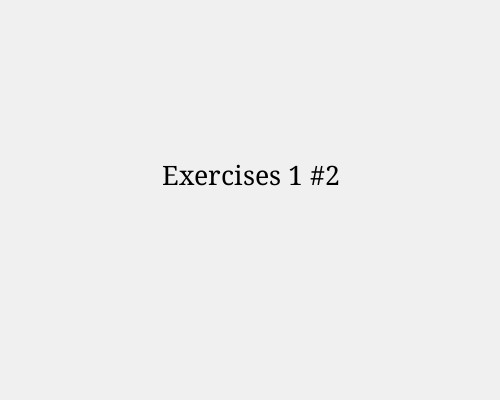
Face yoga exercises 1



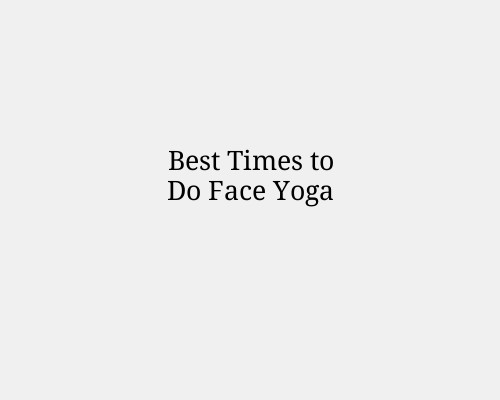
Face yoga has gained popularity as a natural, non-invasive method to tone facial muscles, improve circulation, and reduce the appearance of wrinkles. Like any fitness routine, the timing of your face yoga practice can significantly impact its effectiveness. For those seeking to use face yoga for anti-aging purposes, it’s essential to understand not just how to do it, but also when.
This article explores the best times of day to perform face yoga for maximum anti-aging results, supported by both practical considerations and biological rhythms.
Performing face yoga in the morning helps stimulate blood flow to the facial muscles, which can reduce puffiness and give your face a fresher, more lifted look for the day ahead. Morning sessions activate facial muscles that may have relaxed during sleep, increasing oxygen supply to skin tissues and helping reduce fluid retention.
During the day, stress and screen time can lead to unconscious facial tension—especially in the forehead, eyes, and jaw. This habitual tension accelerates wrinkle development. A midday face
yoga session can serve as a natural "reset" by relaxing overused muscles and re-engaging underused ones.
Schedule this during a lunch break or between meetings. A short 5–10-minute session is enough to refresh your face and prevent premature aging due to habitual expressions.
Evening face yoga helps relax facial muscles, making it easier for your skin to regenerate during sleep. Nighttime is when your body enters repair mode, and a relaxed, tension-free face is more likely to benefit from increased collagen production and cellular renewal.
To see consistent anti-aging results, it’s crucial to make face yoga a habit. Here’s a suggested weekly routine:
Morning (5–10 minutes): Light toning and circulation-boosting exercises.
Midday (5 minutes): Quick tension-release routine.
Evening (10–15 minutes): Deep relaxation and full-face stretching.
One longer session (20–30 minutes): Focus on problem areas like jowls, crow’s feet, or frown lines.
Use tools like gua sha or facial rollers for added benefit.
Consistency over time is what delivers visible results. Like any form of exercise, face yoga doesn’t produce overnight miracles—but regular practice can noticeably lift, firm, and rejuvenate your skin.
Timing your face yoga sessions around your natural daily rhythm enhances its anti-aging effects. A short morning boost, a midday reset, and a relaxing evening stretch create the perfect balance to fight wrinkles, sagging, and dullness. Just like any wellness practice, consistency is key. You don’t need expensive tools or invasive treatments—just your hands, your breath, and a few minutes a day.
Face yoga won’t replace a full anti-aging regimen, but when done regularly at optimal times, it becomes a powerful tool to naturally tone, lift, and rejuvenate your skin.
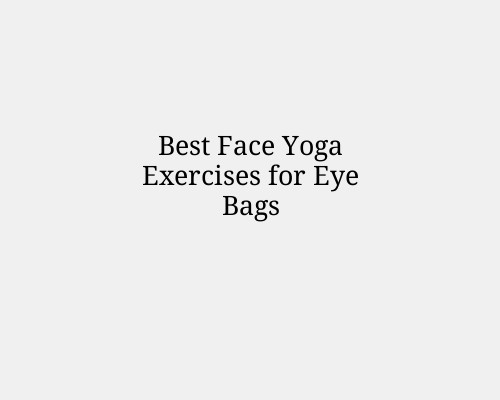
Face yoga is a natural and non-invasive method that aims to tone facial muscles, improve circulation, and reduce the appearance of eye bags and droopy eyelids. While results can vary from person to person, consistent practice can offer subtle improvements in firmness and elasticity over time. Below are some of the best face yoga exercises specifically targeting eye bags and sagging eyelids.
Sit or stand with a straight spine.
Place your index fingers just under the eyebrows.
Gently push your eyebrows up while trying to close your eyes.
Hold the resistance for 5–10 seconds.
Repeat 5 times.
This exercise strengthens the frontalis muscle (which lifts the brow) and the orbicularis oculi (muscles around the eye), helping to tighten the upper eyelid area.
Use your ring fingers to gently tap under your eyes, starting from the inner corner and moving outward.
Repeat the tapping motion for about 30 seconds.
Follow by lightly smoothing the area with your fingers in the same direction.
Tapping increases circulation and supports lymphatic drainage, which helps to reduce fluid retention and eye bags.
Close your eyes and relax.
With your eyes closed, gently squeeze your eyelids shut tighter without scrunching your forehead.
Hold for 5 seconds, then relax.
Repeat 5–10 times.
This builds muscle control and strength around the eye area, helping to reduce sagging and maintain a more lifted eyelid contour.
Open your eyes as wide as you can without raising your eyebrows.
Focus on a single point in front of you.
Hold the position for 5 seconds.
Relax and blink normally.
Repeat 10 times.
This engages the levator palpebrae superioris (the muscle responsible for eyelid elevation), helping to improve muscle tone and reduce sagging.
Place both palms on your forehead with fingers pointing inwards.
Gently pull the skin on your forehead outward to the sides.
At the same time, try to lift your eyebrows upward.
Hold for 10 seconds, release, and repeat 5 times.
By providing resistance, this exercise trains the muscles to work more efficiently without overusing the forehead, which often leads to sagging brows and upper lids.
Smile with your lips closed and try to push your cheeks upward toward your eyes.
While doing this, gently squint your eyes without wrinkling your forehead.
Hold for 5 seconds and relax.
Repeat 5–8 times.
This stimulates the lower portion of the orbicularis oculi and lifts the cheeks, which can reduce the appearance of under-eye hollowness and puffiness.
Place your fingers at your temples and gently pull the skin back and slightly upward.
While holding this position, slowly close your eyes, focusing on the resistance.
Hold for 10 seconds, then relax.
Repeat 3–5 times.
This move helps to engage the lateral eye muscles and reduce laxity, especially at the outer eyelid and temple region.
Visible improvement depends on age, skin condition, and frequency of practice. Some users notice subtle differences in 2–4 weeks, while more significant lifting and reduction in puffiness may take 2–3 months of regular exercise.
Face yoga offers a natural and cost-effective approach to address eye bags and droopy lids. While it’s not a miracle cure, consistent and mindful practice can provide real, visible benefits over time. Paired with good skincare and healthy habits, these exercises can enhance the firmness and appearance of the eye area without the need for invasive treatments.
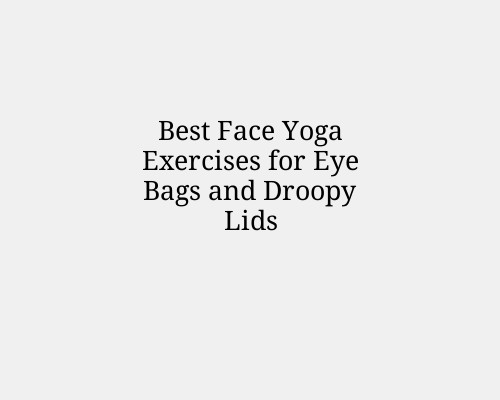
Face yoga is a natural and non-invasive method that aims to tone facial muscles, improve circulation, and reduce the appearance of eye bags and droopy eyelids. While results can vary from person to person, consistent practice can offer subtle improvements in firmness and elasticity over time. Below are some of the best face yoga exercises specifically targeting eye bags and sagging eyelids.
Sit or stand with a straight spine.
Place your index fingers just under the eyebrows.
Gently push your eyebrows up while trying to close your eyes.
Hold the resistance for 5–10 seconds.
Repeat 5 times.
This exercise strengthens the frontalis muscle (which lifts the brow) and the orbicularis oculi (muscles around the eye), helping to tighten the upper eyelid area.
Use your ring fingers to gently tap under your eyes, starting from the inner corner and moving outward.
Repeat the tapping motion for about 30 seconds.
Follow by lightly smoothing the area with your fingers in the same direction.
Tapping increases circulation and supports lymphatic drainage, which helps to reduce fluid retention and eye bags.
Close your eyes and relax.
With your eyes closed, gently squeeze your eyelids shut tighter without scrunching your forehead.
Hold for 5 seconds, then relax.
Repeat 5–10 times.
This builds muscle control and strength around the eye area, helping to reduce sagging and maintain a more lifted eyelid contour.
Open your eyes as wide as you can without raising your eyebrows.
Focus on a single point in front of you.
Hold the position for 5 seconds.
Relax and blink normally.
Repeat 10 times.
This engages the levator palpebrae superioris (the muscle responsible for eyelid elevation), helping to improve muscle tone and reduce sagging.
Place both palms on your forehead with fingers pointing inwards.
Gently pull the skin on your forehead outward to the sides.
At the same time, try to lift your eyebrows upward.
Hold for 10 seconds, release, and repeat 5 times.
By providing resistance, this exercise trains the muscles to work more efficiently without overusing the forehead, which often leads to sagging brows and upper lids.
Smile with your lips closed and try to push your cheeks upward toward your eyes.
While doing this, gently squint your eyes without wrinkling your forehead.
Hold for 5 seconds and relax.
Repeat 5–8 times.
This stimulates the lower portion of the orbicularis oculi and lifts the cheeks, which can reduce the appearance of under-eye hollowness and puffiness.
Place your fingers at your temples and gently pull the skin back and slightly upward.
While holding this position, slowly close your eyes, focusing on the resistance.
Hold for 10 seconds, then relax.
Repeat 3–5 times.
This move helps to engage the lateral eye muscles and reduce laxity, especially at the outer eyelid and temple region.
Visible improvement depends on age, skin condition, and frequency of practice. Some users notice subtle differences in 2–4 weeks, while more significant lifting and reduction in puffiness may take 2–3 months of regular exercise.
Face yoga offers a natural and cost-effective approach to address eye bags and droopy lids. While it’s not a miracle cure, consistent and mindful practice can provide real, visible benefits over time. Paired with good skincare and healthy habits, these exercises can enhance the firmness and appearance of the eye area without the need for invasive treatments.
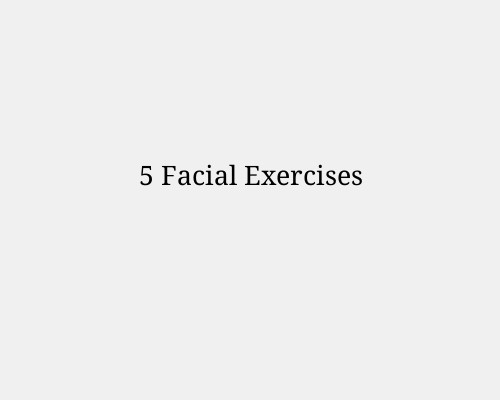
As we age, our facial muscles naturally lose tone and elasticity, resulting in sagging skin, wrinkles, and dullness. While skincare products can support the surface of the skin, facial exercises—or "face yoga"—can tone the underlying muscles, improve blood circulation, and stimulate collagen production for a more youthful appearance. Here are five facial exercises that can deliver instant visible results when practiced consistently.
Place both hands on your forehead, fingers spread out between the eyebrows and hairline.
Gently sweep your fingers outward across the forehead, applying light pressure to stretch the skin.
Repeat this motion 10 times.
Open your mouth to form an "O" shape and position your upper lip over your teeth.
Smile with the corners of your mouth to lift your cheek muscles.
Place your fingers lightly on the top of your cheeks and hold the lift for 5 seconds.
Lower and repeat 10 times.
Tilt your head back and look toward the ceiling.
Press your tongue against the roof of your mouth.
Smile and hold the position for 5 seconds.
Repeat this exercise 10 times.
Place your index fingers at the outer corners of your eyes.
Gently pull the skin slightly upward toward the temples.
Simultaneously squint your lower eyelids, feeling the tension build under your eyes.
Hold for 3 seconds, then relax.
Repeat 10 times.
Sit or stand upright with your spine straight.
Tilt your head back and look at the ceiling.
Pucker your lips tightly, as if trying to kiss the ceiling.
Hold for 5 seconds, then relax.
Repeat 10–15 times.
Facial exercises are a cost-effective and natural way to improve your appearance. While they won't replace professional treatments for everyone, they offer noticeable improvement in facial tone, lift, and brightness when performed consistently. For many, the results are instant— tighter cheeks, brighter eyes, and a more defined jawline after just one session. Over time, these exercises can significantly contribute to a more youthful, sculpted look without needles or downtime.
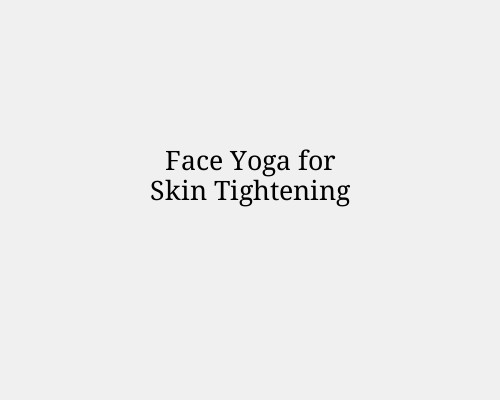
Face yoga has emerged as a non-invasive, natural approach to combat signs of aging, sagging skin, and fine lines. Just as traditional yoga can tone and sculpt the body, facial exercises target the 43 muscles in your face to improve circulation, support lymphatic drainage, and enhance muscle tone. When practiced consistently, face yoga can promote firmer skin, reduce puffiness, and improve overall facial symmetry. Below is a guide to the most effective face yoga moves you can do at home for skin tightening.
Face yoga is a series of facial exercises designed to tone the muscles under your skin. These exercises help stimulate collagen production, improve blood flow, and increase elasticity, resulting in a more youthful appearance over time. Unlike cosmetic procedures, face yoga carries no risk of side effects, making it an attractive alternative for those who prefer natural skincare methods.
Place both hands on your forehead with fingers spread out between the eyebrows and hairline.
Gently sweep your fingers outward across the forehead while applying light pressure.
Repeat 10 times.
Open your mouth to form an “O” and position your upper lip over your teeth.
Smile with the corners of your mouth.
Place your fingers lightly on the top of your cheeks and lift them upwards while holding the smile.
Hold for 10 seconds and repeat 10 times.
Tilt your head back and look toward the ceiling.
Push your lower jaw forward and feel the stretch in your neck and jaw.
Hold for 5–10 seconds.
Repeat 5–10 times.
Place your index fingers under each eyebrow and gently push up.
Try to close your eyes while pushing upward with your fingers.
Hold for 10 seconds and repeat 5 times.
Suck in your cheeks and lips to form a fish face.
Try to smile while holding the position.
Hold for 5–10 seconds.
Repeat 5 times.
Take a deep breath through the nose.
Open your mouth wide, stick out your tongue as far as possible, and exhale strongly while making a “ha” sound.
Widen your eyes at the same time.
Hold for 5 seconds.
Repeat 3 times.
While face yoga is generally safe, individuals with certain conditions should consult a healthcare provider before starting:
Face yoga is a powerful and accessible tool for those seeking to tighten and rejuvenate their skin without resorting to invasive procedures. When practiced correctly and consistently, it can offer noticeable improvements in facial tone, elasticity, and overall radiance. Whether you're just beginning your anti-aging journey or looking to complement your existing skincare routine, integrating these face yoga exercises into your daily regimen may yield long-term benefits for your skin's health and appearance.
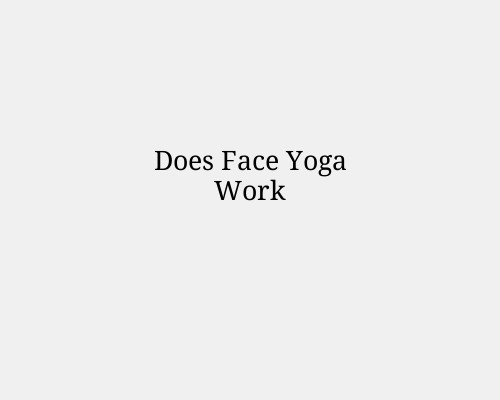
Face yoga has exploded in popularity across social media platforms, with influencers and beauty enthusiasts touting its ability to lift, tone, and rejuvenate the face—no needles required. But does it actually work? To answer that, let’s look beyond the hype and dive into what face yoga really is, the science behind it, and testimonials from real women who have incorporated it into their routines.
Face yoga is a series of facial exercises intended to tone the muscles beneath the skin, increase blood circulation, and promote lymphatic drainage. The practice typically involves exaggerated facial movements, targeted muscle engagement, and controlled breathing. Think of it as a workout for your face.
The idea is simple: just like you can firm your arms or abs through strength training, you can potentially lift sagging skin and reduce fine lines by strengthening the 40+ muscles in your face.
Scientific evidence on face yoga is still limited, but some studies have shown promising results.
A notable 2018 study published in JAMA Dermatology followed middle-aged women performing daily face yoga exercises over 20 weeks. Dermatologists assessing the before-and- after photos found a modest but noticeable improvement in upper and lower cheek fullness.
Participants reported looking about three years younger on average.
Other dermatologists are cautiously optimistic. While not a replacement for clinical procedures, they agree that regularly engaging the facial muscles can:
Improve muscle tone and facial symmetry
Increase circulation, giving skin a healthy glow
Reduce fluid retention and puffiness
Help with tension, especially in the jaw and brow area
However, not all experts are convinced. Some argue that overuse of certain muscles could deepen wrinkles, particularly if the exercises are done incorrectly. Therefore, proper technique is crucial.
Many women have reported positive changes after adding face yoga to their daily or weekly routines. While results vary based on consistency, age, and lifestyle, here are a few real-world stories that give insight into its potential.
“I started face yoga during the pandemic just to feel like I was doing something for self-care. After about two months of doing 15 minutes a day, I started seeing definition in my cheekbones again. My face just looked… alive.”
“I’ve struggled with jaw tension and TMJ for years. I began doing jaw release exercises and noticed not only less tightness but a more contoured look in my lower face. I didn’t expect the visual difference—it was a bonus.”
“I’m not into Botox or anything invasive. I found a face yoga program on YouTube and stuck to it every morning for 10 minutes. It didn’t erase wrinkles, but my skin looked firmer and my eyes less tired. Friends asked if I’d been on vacation.”
“At first, I was skeptical. But after doing it consistently for three months, I could actually see subtle lifting around my brows and jawline. I didn’t look like a different person—but I looked better.”
While results aren’t guaranteed for everyone, several common benefits are frequently reported:
Realistically, you’ll need to commit to 10–20 minutes a day for several weeks to start noticing visible improvements. Most women who saw results practiced regularly for at least 6–8 weeks. Like any fitness regimen, consistency and correct technique are critical.
Also, it's not just about doing the exercises—hydration, diet, sleep, and skincare all play a role in your overall facial appearance.
Here are a few beginner-friendly face yoga moves that target common problem areas:
Each movement should be done with intention and not too aggressively—overdoing it can lead to tension or even headaches.
Face yoga is generally safe, but incorrect or overly aggressive movements can have the opposite effect. Stretching or pulling the skin too hard may contribute to lines rather than reduce them. People with certain skin or neurological conditions should consult a dermatologist or medical professional before beginning.
Face yoga can work, especially for those willing to invest the time and practice good technique. While it won’t replace a facelift or erase deep wrinkles, many women report noticeable improvements in skin tone, facial symmetry, and even emotional well-being. The results are subtle and natural—exactly what many are looking for.
It’s not a miracle cure, but it is a free, non-invasive way to feel more in control of your appearance. If nothing else, it encourages mindfulness, daily self-care, and awareness of how facial tension affects how we look and feel.
So, does face yoga work? For many real women—it absolutely does.
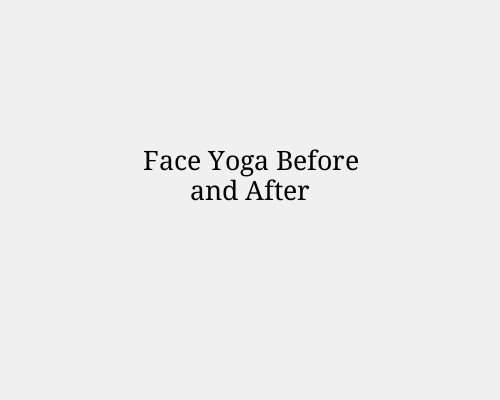
Face yoga has become a popular alternative to invasive cosmetic procedures, promising natural lifting and toning through a series of facial exercises. While it may sound unconventional, many users claim visible improvements in just 30 days. But what’s the reality behind the hype? This article will provide a realistic look at what face yoga can — and can’t — do for your face in a month.
Face yoga consists of targeted facial exercises designed to stimulate the muscles, skin, and lymphatic system. These movements can include stretching, holding expressions, and using fingers for resistance. The goal is to improve muscle tone, increase blood flow, and support lymphatic drainage, which may reduce puffiness and encourage a youthful appearance.
Unlike botox or fillers, face yoga aims for gradual, natural enhancement. Practicing it regularly (usually 10–30 minutes daily) is essential to see noticeable changes.
You may experience slight fatigue in facial muscles, especially if you’re overworking areas without proper form.
Results are still modest; frustration is common at this stage for those expecting dramatic changes.
This is often when people start noticing clearer before and after distinctions, especially in photos.
By the end of 30 days, consistent practitioners often see real, measurable progress, although results vary depending on age, skin condition, and starting muscle tone.
Skin tone Improved circulation and glow
Complete wrinkle removal
Drastic lifting in the neck or lower face
Replacement for cosmetic procedures
Face yoga can deliver visible benefits in 30 days, especially in terms of muscle tone, facial symmetry, and skin vitality. However, it’s not a quick fix for deep wrinkles or significant sagging. Like any exercise regimen, its power lies in consistency, proper form, and realistic expectations.
It’s not a replacement for dermatological treatments, but for those seeking a natural, non- invasive path to a healthier-looking face, face yoga is worth considering. Stick with it beyond 30 days, and the long-term results can be even more rewarding.
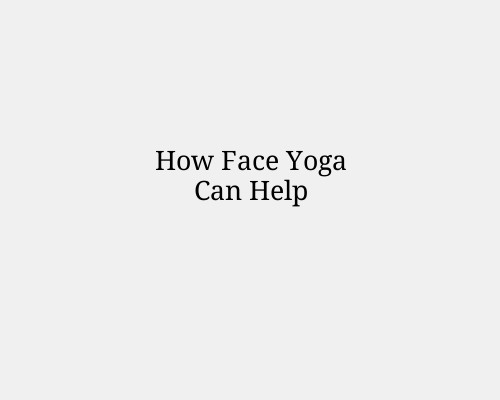
As the beauty industry continues to push an endless array of creams, serums, and surgical interventions, a growing number of people are turning to a more natural, non-invasive alternative: face yoga. Designed to strengthen and tone the muscles of the face, face yoga is gaining attention as a tool for graceful aging. The practice involves a series of facial exercises that engage specific muscles to improve circulation, boost collagen production, and enhance facial symmetry. While it won’t eliminate deep wrinkles overnight, consistent practice may offer noticeable long-term benefits.
Face yoga combines facial exercises with mindful breathing and massage techniques. Just as traditional yoga tones and strengthens body muscles, face yoga targets the more than 50 muscles in the face and neck. These muscles are often underused or only partially engaged in daily expressions. Over time, underused muscles can weaken, leading to sagging skin, drooping eyelids, and deepening wrinkles.
Face yoga seeks to counteract these effects by stimulating and toning facial muscles. Exercises typically involve exaggerated facial movements, resistance techniques, and targeted stretches. For example, lifting the cheeks by smiling widely while resisting with the fingers, or puckering the lips in different directions to work surrounding muscles.
One of the primary benefits of face yoga is the visible toning of the facial muscles. Just as a fitness routine sculpts the body, regular facial exercises can help define the jawline, lift the cheeks, and firm the neck area. With age, muscle volume and skin elasticity naturally decline. Face yoga helps counteract this by keeping facial muscles active and engaged, promoting firmness and structure.
Facial exercises boost blood flow to the skin’s surface, increasing oxygen and nutrient delivery to skin cells. This can result in a healthier, brighter complexion. Better circulation also supports skin regeneration, helping to reduce dullness and promote a more youthful glow.
The repeated movements and stretching involved in face yoga can stimulate the production of collagen and elastin—proteins essential for skin’s firmness and elasticity. As we age, natural production of these proteins decreases, leading to sagging and fine lines. Face yoga encourages their renewal, which may help slow down the visible signs of aging.
We often carry stress in our facial muscles without realizing it—tight jaws, furrowed brows, and clenched expressions. Face yoga incorporates gentle massage and relaxation techniques that can help release this tension. This not only feels good but may prevent the formation of expression lines caused by repetitive stress.
Asymmetry is common in the face due to lifestyle habits, dominant sleeping positions, or even chewing preferences. Face yoga can help balance uneven features by strengthening weaker muscles and improving overall facial symmetry.
While face yoga won’t provide the immediate results of Botox or fillers, it offers a non- invasive, risk-free alternative with long-term benefits. Cosmetic procedures often focus on surface-level changes or temporarily paralyzing muscles to reduce wrinkles. In contrast, face yoga addresses the underlying muscle structure and encourages natural rejuvenation.
It’s important to manage expectations—results take time and consistency. Most practitioners report visible changes after 6 to 10 weeks of daily practice, with sustained improvements over months.
Here are three beginner-friendly face yoga exercises that target common aging concerns:
Smile as wide as possible, lift your cheeks toward your eyes.
Place your fingers lightly on your cheekbones and hold the position for 10 seconds.
Release and repeat 10 times.
This helps firm the cheeks and reduce sagging.
Place your fingertips on the center of your forehead.
Apply gentle pressure as you sweep your fingers outward to the temples.
Repeat 10 times, focusing on releasing tension. This can reduce the appearance of forehead lines.
Tilt your head back and look toward the ceiling.
Pucker your lips and stretch them toward the ceiling as far as possible.
Hold for 5 seconds and repeat 10 times. This strengthens the neck and jawline area.
The scientific research on face yoga is still emerging. A notable 2018 study published in JAMA Dermatology showed that middle-aged women who practiced facial exercises for 20 weeks experienced improved upper and lower cheek fullness. However, broader studies are needed to confirm long-term efficacy and understand mechanisms in more detail.
Skeptics argue that overuse of facial muscles could potentially increase wrinkles, especially if exercises are performed incorrectly. This is why learning from a trained practitioner or using reliable guides is essential. Like any exercise program, technique and consistency determine the outcome.
Face yoga is a promising natural method for those looking to age gracefully without surgery or injections. It strengthens muscles, enhances circulation, and promotes a healthier, more toned appearance. While it may not replace medical treatments for everyone, it’s a valuable addition to any holistic skincare routine. With patience and practice, face yoga can help maintain facial vitality and support long-term skin health.